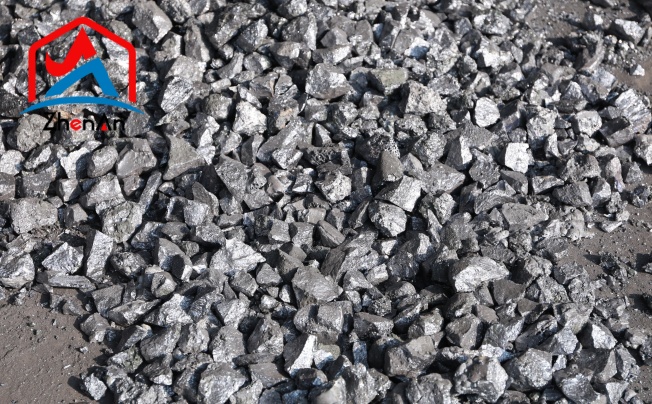What Makes Silicon So Special?
Silicon, a chemical element with the symbol Si and atomic number 14, may not be the most glamorous element on the periodic table. Its exceptional properties and remarkable versatility have earned it a place of unparalleled importance in our technological advancements.
The Basics of Silicon
Definition and Atomic Structure of Silicon
Silicon, a chemical element with the symbol Si and atomic number 14, holds a significant place in the periodic table due to its unique properties. This metalloid possesses a crystalline nuclear structure characterized by four valence electrons in its outer shell.
Its atomic structure consists of a central nucleus containing protons and neutrons, orbited by electron shells that determine its chemical behavior. Silicon's atomic structure allows it to form bonds with other elements, particularly oxygen, resulting in various compounds crucial for many applications.
The defining feature of silicon's atomic structure is its ability to form covalent bonds with other silicon atoms, creating a sturdy lattice structure known as a crystal. This arrangement gives silicon its semiconducting properties that are vital for electronic applications.
Moreover, silicon crystals exhibit high thermal stability and do not conduct electricity as effectively as metals but can be modified through processes like doping to enhance conductivity levels. Understanding the atomic structure of silicon is fundamental to grasping its role in modern technology and innovation.
Abundance and Extraction Methods
Silicon ranks as the second most abundant element in Earth's crust after oxygen, comprising approximately 27% of its mass. This abundance is primarily attributed to silicate minerals like quartz and feldspar, which are prevalent geological components worldwide.
Extracting elemental silicon from these mineral deposits involves several intricate processes that harness both chemical reactions and high-temperature techniques. One common method is the reduction of silica (silicon dioxide) using carbon in electric arc furnaces to obtain pure silicon.
The extraction of silicon also involves refining techniques to eliminate impurities and achieve desired levels of purity for specific applications. Metallurgical-grade silicon undergoes further purification steps using advanced processes like the Siemens method or the metallurgical route involving reactions with industrial chemicals.
The Physical Properties of Silicon
Melting Point, Boiling Point, and Density
Silicon, a lustrous gray crystalline solid, possesses fascinating physical properties that contribute to its significance in various industries. One of the key characteristics of silicon is its relatively high melting point. At 1,414 degrees Celsius (2,577 degrees Fahrenheit), silicon exhibits exceptional thermal stability, allowing it to withstand extreme temperatures without losing structural integrity.
This property makes silicon ideal for applications requiring heat resistance such as in the aerospace industry or electronic devices that generate substantial heat. Similarly, silicon's boiling point of 2,355 degrees Celsius (4,271 degrees Fahrenheit) further emphasizes its ability to endure challenging conditions.
This high boiling point is crucial in the production of semiconductors and other advanced materials that demand elevated processing temperatures during fabrication processes. Moreover, silicon showcases a density of approximately 2.33 grams per cubic centimeter (g/cm³) at room temperature.
Its moderate density allows for ease of handling and integration into various manufacturing processes while maintaining structural stability. The combination of these physical properties positions silicon as a versatile element with endless potential for practical applications.
Crystal Structure and Semiconducting Nature
The crystal structure of silicon plays an integral role in defining its properties and functionalities. Silicon has a diamond-like crystalline structure wherein each silicon atom forms covalent bonds with four neighboring atoms arranged tetrahedrally.
This arrangement creates a robust network resulting in exceptional mechanical strength. Furthermore, the unique crystal structure contributes to one of its most significant traits: semiconductivity.
Silicon atoms possess four valence electrons which they share covalently with their adjacent neighbors. However, this results in incomplete outer shells which create energy bands within the material's atomic structure.
These energy bands enable the controlled flow or restriction of electric current based on external influences such as temperature or applied voltage. The semiconducting nature of silicon has revolutionized modern technology by serving as the foundation for electronic devices like transistors and integrated circuits (ICs).
Through precise doping techniques involving impurities such as boron or phosphorus atoms introduced into the lattice structure during fabrication processes known as "doping," semiconductor materials like silicon can selectively control electron flow within circuits and facilitate complex computing operations. Understanding the physical properties of silicon provides insight into why it holds such immense value across several industries today.
Its high melting and boiling points allow it to withstand extreme temperatures while maintaining structural integrity—an essential quality for numerous applications involving heat resistance requirements. Additionally, its crystal structure endows it with excellent mechanical strength and semiconducting behavior crucial for electronic devices' functionality at microscopic scales.
Chemical Properties of Silicon
Reactivity with Oxygen and Formation of Silica Compounds
Silicon, in its purest form, is not readily reactive with oxygen. However, when exposed to air or moisture, a thin layer of silicon dioxide (SiO2), commonly known as silica, forms on its surface. This naturally occurring oxide layer acts as a protective shield for the underlying silicon, preventing further reaction with oxygen.
The formation of silica compounds is crucial in many industries. Silica is used extensively in the production of glass, ceramics, and even computer chips.
When silicon reacts with oxygen at high temperatures (above 1,200°C), it undergoes a process called oxidation. This reaction leads to the formation of SiO2 molecules.
The resulting silicon dioxide possesses several remarkable properties that make it desirable for numerous applications. For instance, amorphous silica is widely used as a desiccant due to its ability to absorb moisture from the surrounding environment effectively.
Stability in Various Environments
One of silicon's most extraordinary attributes is its stability across various environmental conditions. Silicon-based materials exhibit exceptional resistance to corrosion and degradation caused by exposure to acids, alkalis, and other harsh chemicals.
This makes silicon an ideal choice for constructing equipment or containers required to handle or store corrosive substances. Moreover, silicon demonstrates remarkable thermal stability over a wide range of temperatures.
It retains its structural integrity even under extreme heat conditions without undergoing significant changes in physical properties. This quality finds extensive use in applications where materials need to withstand high-temperature environments like furnaces or combustion engines.
Furthermore, silicon's stability extends to biological environments as well. It exhibits excellent biocompatibility and does not elicit harmful responses when introduced into living organisms.
This property has propelled the use of silicon in medical implants such as pacemakers and prosthetics where long-term compatibility with bodily tissues is vital. Silicon's ability to maintain stability across different environments reinforces its position as an indispensable element across various industries while ensuring longevity and reliability in countless applications.
Applications in Electronics Industry
Role as a Semiconductor in Transistors and Integrated Circuits (ICs)
Silicon, with its remarkable electrical properties, plays a pivotal role as a semiconductor in the world of electronics. Transistors and integrated circuits (ICs), the backbone of modern electronic devices, heavily rely on silicon's unique characteristics to perform their complex functions. In transistors, silicon serves as a switching element that allows for the amplification and control of electrical signals.
By modulating the flow of current between different regions within the transistor, silicon enables precise control over electronic devices. Integrated circuits, on the other hand, utilize thousands or even millions of transistors interconnected on a small chip.
Silicon's semiconducting nature allows for miniaturization while maintaining high performance and energy efficiency. This revolutionized the electronics industry by enabling the development of increasingly powerful and compact devices such as smartphones, computers, and advanced microprocessors.
Explanation of Doping Process for Altering Conductivity Levels
To enhance silicon's functionality in electronic applications, dopants are strategically introduced to alter its conductivity levels. Doping involves intentionally adding impurities to silicon crystals during their formation process. These impurities can either introduce extra electrons (n-type doping) or create electron deficiencies called "holes" (p-type doping) within the crystal lattice structure.
In n-type doping, atoms like phosphorus or arsenic are added to silicon crystals to form "donor" impurities that provide excess conduction electrons. This increases silicon's conductivity by allowing an abundance of mobile charge carriers that can carry electric current efficiently.
In p-type doping, elements such as boron or gallium are introduced as "acceptor" impurities that create holes by capturing nearby electrons within the crystal structure. This introduces mobile charge carriers known as positive holes and enhances conductivity accordingly.
Importance of Silicon's Ability to Withstand High Temperatures
Another crucial aspect contributing to silicon's dominance in the electronics industry is its exceptional ability to withstand high temperatures without significant degradation or structural changes. This property is particularly vital for technologies where heat dissipation becomes challenging due to increased miniaturization and higher power densities. Silicon exhibits excellent thermal stability because of its strong covalent bonds between silicon atoms within its crystal lattice structure.
These bonds allow it to resist atomic diffusion even at elevated temperatures while maintaining the desired electrical properties required for efficient device operation. This remarkable temperature resistance makes silicon ideal for applications in power electronics where devices generate substantial heat during operation, such as voltage regulators or inverters used in renewable energy systems or electric vehicles.
Additionally, it ensures reliability and longevity in integrated circuits where multiple components operate close together generating significant heat dissipation challenges. Silicon's role as a semiconductor is indispensable in the electronics industry due to its ability to act as an efficient switch and enable precise control over electronic signals through transistors and integrated circuits (ICs).
The process of doping further enhances this functionality by altering conductivity levels through the intentional introduction of impurities into silicon crystals. Moreover, thanks to its remarkable thermal stability properties allowing it to withstand high temperatures without compromising performance or structural integrity, silicon becomes an ideal choice for applications requiring reliable operation under demanding conditions.






